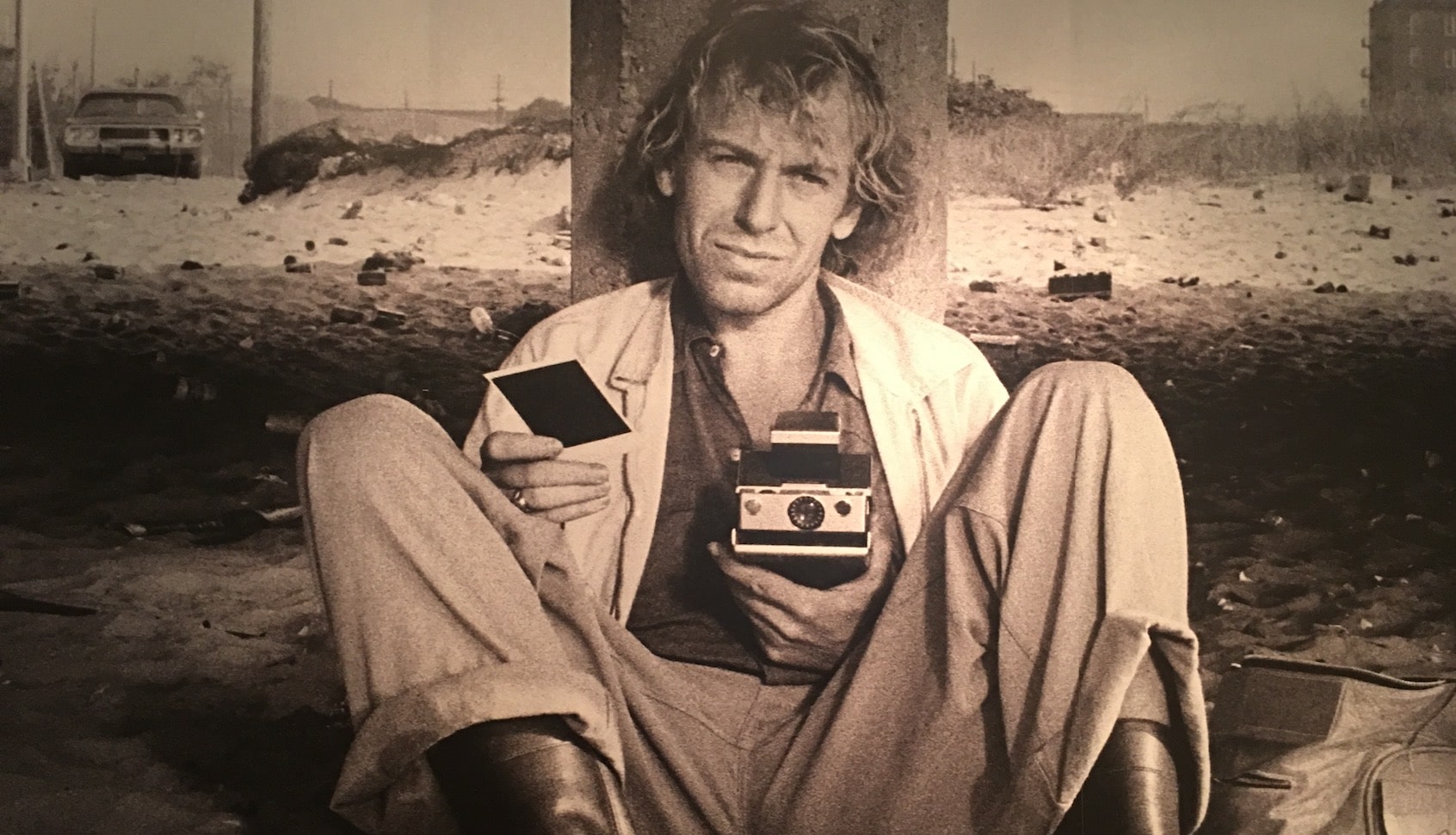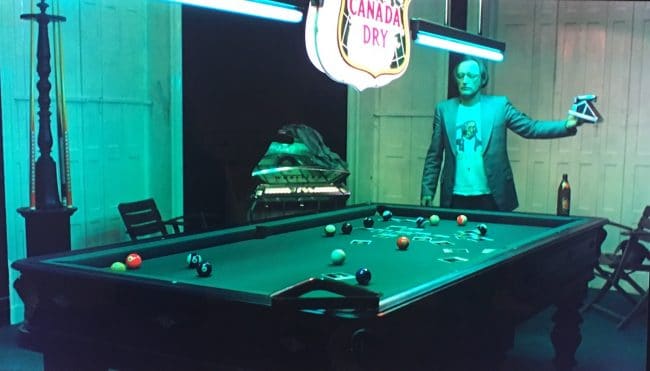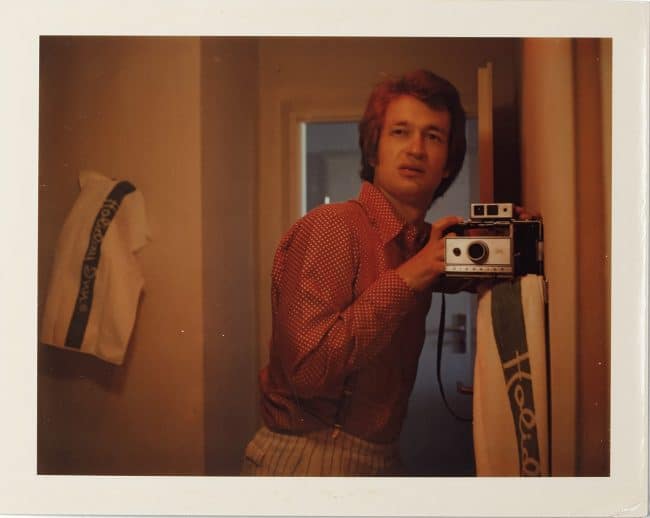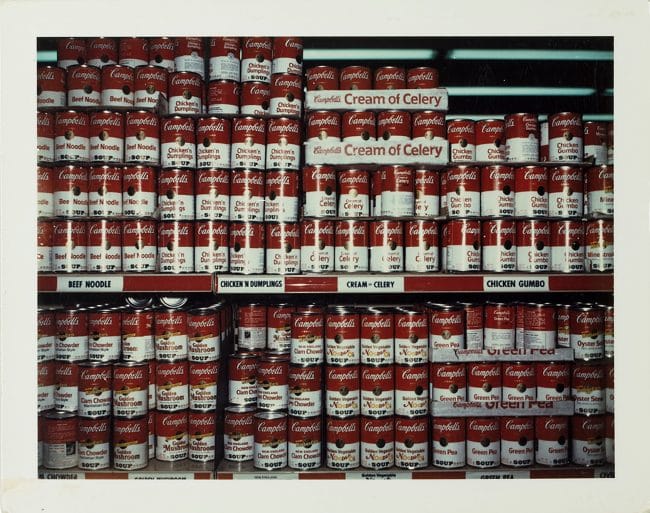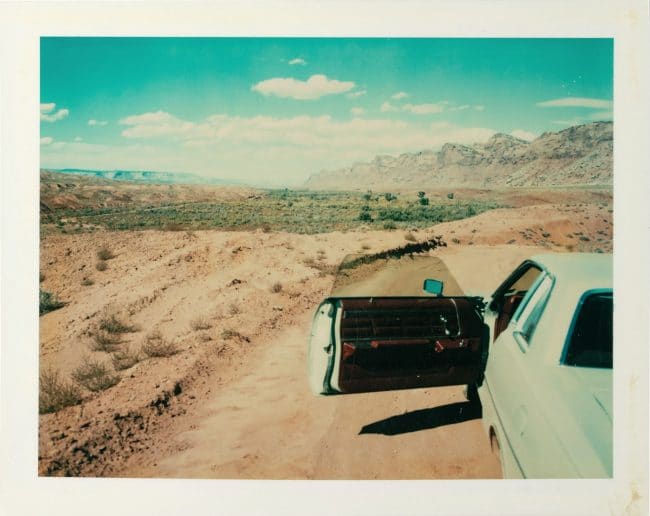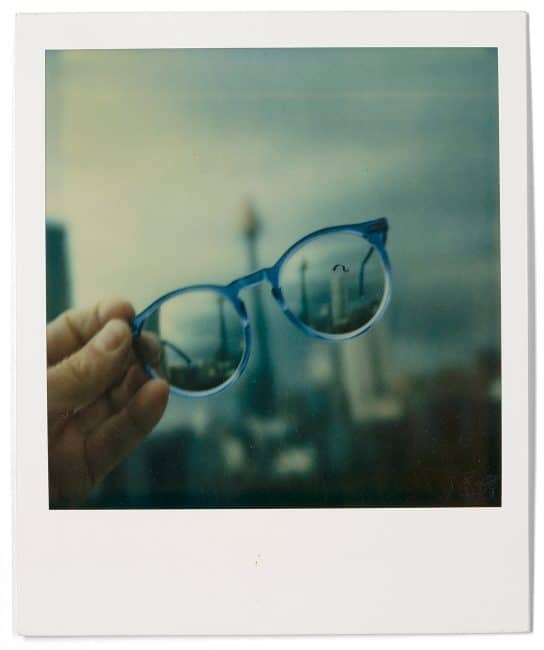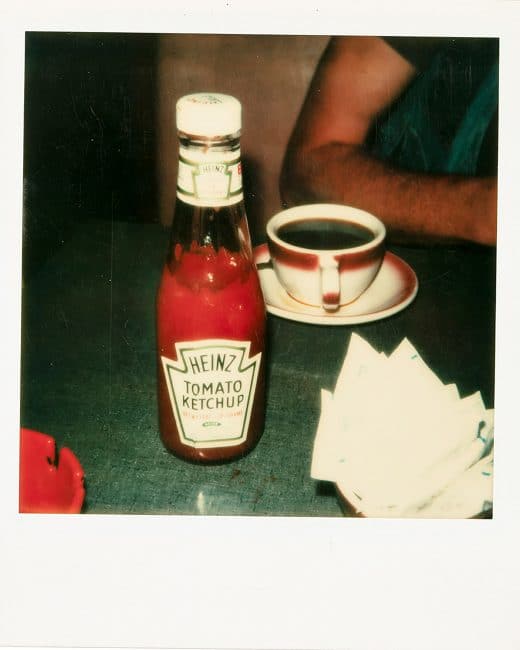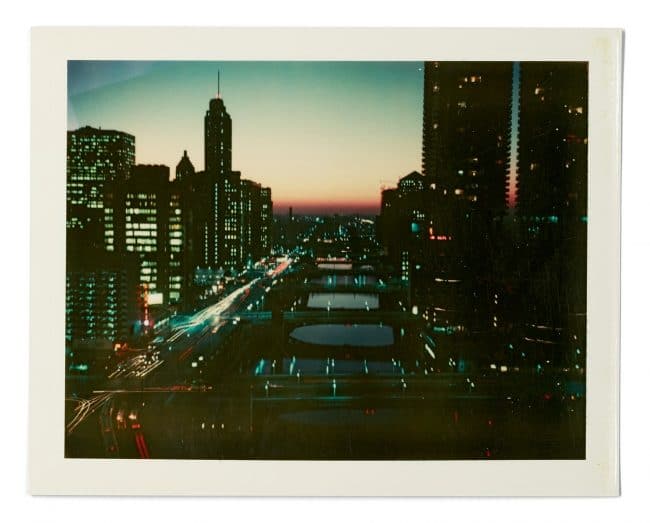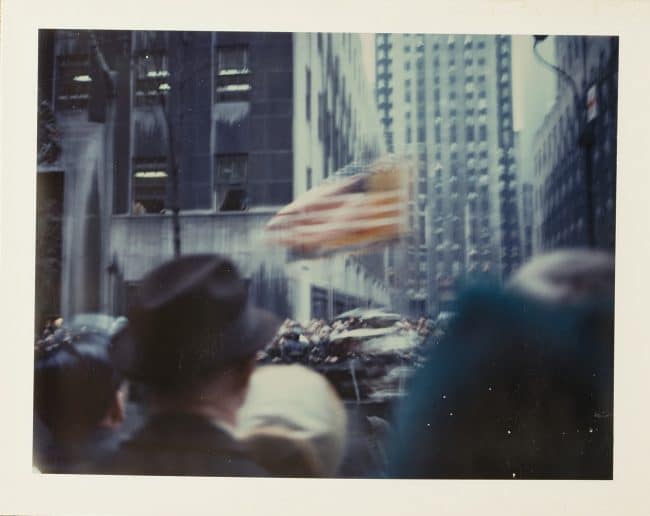Anyone familiar with the work of Wim Wenders may suspect that he has more than a passing interest in photography. In two of his movies in particular the use of Polaroid cameras is a vital part of the narrative: in the road movie Alice in the Cities there is a photo-obsessed protagonist whilst in The American Friend, Dennis Hopper snaps himself repeatedly. Both make appearances in the exhibition, the film clip of Hopper showing alongside multiple images taken during the period of filming.
It is not however necessary to have any knowledge of his films to enjoy this exhibition for Wenders is a fine photographer. He is reluctant to admit this, and wants the Polaroids to be enjoyed rather as illustrations of the period and a record of the people and places.
He says “I was learning the craft of filmmaking in those years, and Polaroids were the perfect complimentary tool: as a visual notebook, a quick way of ‘framing’ the world, a verification of my interest in people, places, objects, or simply as a way to remember things.”
Wenders was a prolific Polaroid user, so much so that the company would supply him with cameras and film to test. He himself estimates that he took more than 12,000 Polaroids between 1973 and 1983 although only 3,500 remain. “The thing is,” he says, “you gave them away. You had the person in front of you, whose picture you had just taken, and it was like they had more right to it. The Polaroids helped with making the movies, but they were not an aim in themselves. They were disposable.”
The images are wonderfully evocative. The are instinctive and clever. Sometimes they make clever use of colour and light at others there are moody black and white street scenes. He dips in an out of recognisable styles. In one a car door hangs loosely open, inviting us to complete a story perhaps. In another a pair of spectacles looks back at in front of a blurred cityscape.
There are moments of leisure – a casual image of a bottle of ketchup on a table is cleverly composed and invokes Martin Parr’s casual inspection on culture. An image of Dennis Hopper cigarette in hand is a perfect off-screen image of a celebrity. Stacks of Campbell’s Soup are clearly a reference to Andy Warhol.
Often they were his visual notebook – a way of testing out frames and ideas – but more than that they offered him a kind of liminal space between the subject and the photograph, the photographer and the act of taking a photo, the intention and the outcome.
He is also well aware of the place in photographic history of the Polaroid. “The entire Polaroid process has nothing to do with our contemporary experience, when we look at virtual and vanishing apparitions on a screen … This was a true THING, a singular object of its own, not a copy, not a print, not multipliable, not repeatable.”
Sadly it is now 30 years since Wenders took any Polaroids. “It’s not just the meaning of the image that has changed – the act of looking does not have the same meaning. Now, it’s about showing, sending and maybe remembering. It is no longer essentially about the image. The image for me was always linked to the idea of uniqueness… that whole notion is gone.”
Despite his insistence that this is ephemera not to be taken seriously, when displayed in a gallery and viewed as a body of work there is no doubt that these are important images and easily elevated to the status of ‘art’.
Wenders insists “The meaning of these Polaroids is not in the photos themselves – it is in the stories that lead to them. That’s why the exhibition is called Instant Stories – the catalogue is a storybook more than a photo book.” This is a ‘story’ that is absolutely essential viewing for any photographer or film maker whilst still being a rich and fascinating experience for everyone.
Instant Stories is at The Photographers’ Gallery, London until 11 February 2018
Purchase a copy of Wim Wenders: Instant Stories here
CELLOPHANELAND* were guests of The Photographers’ Gallery




